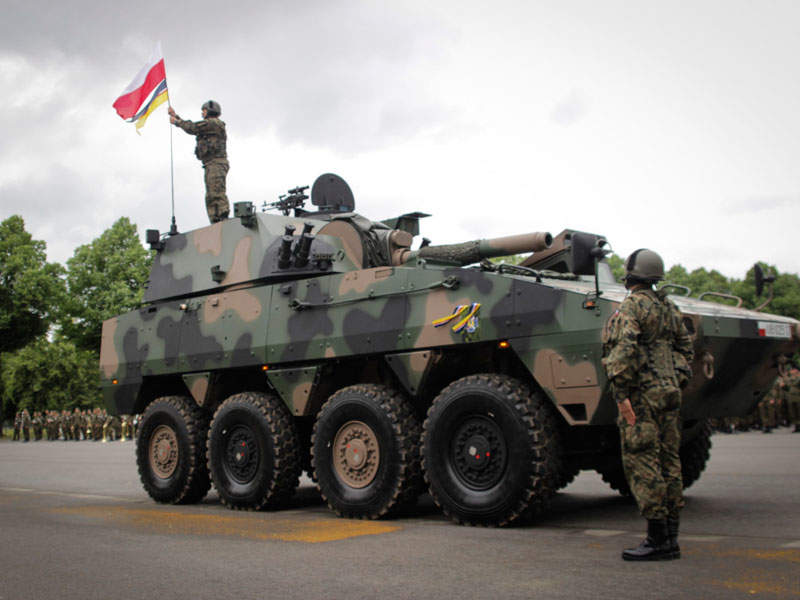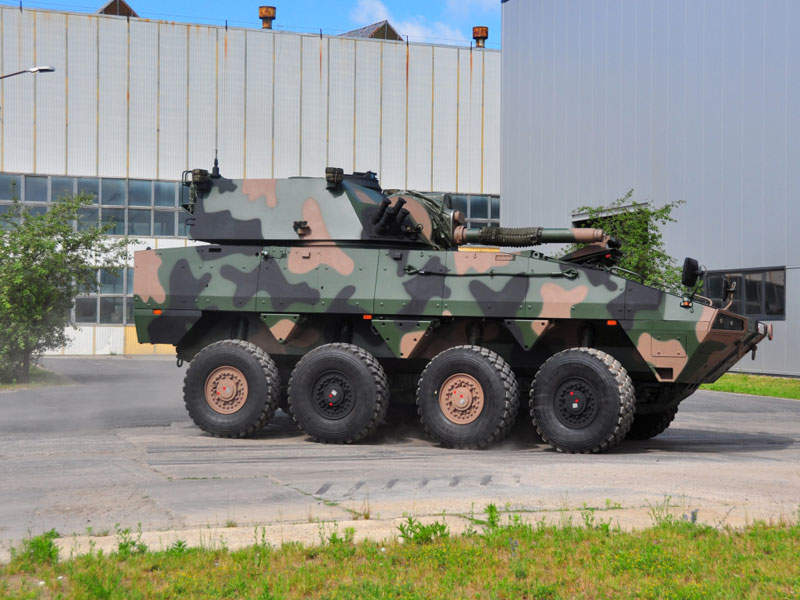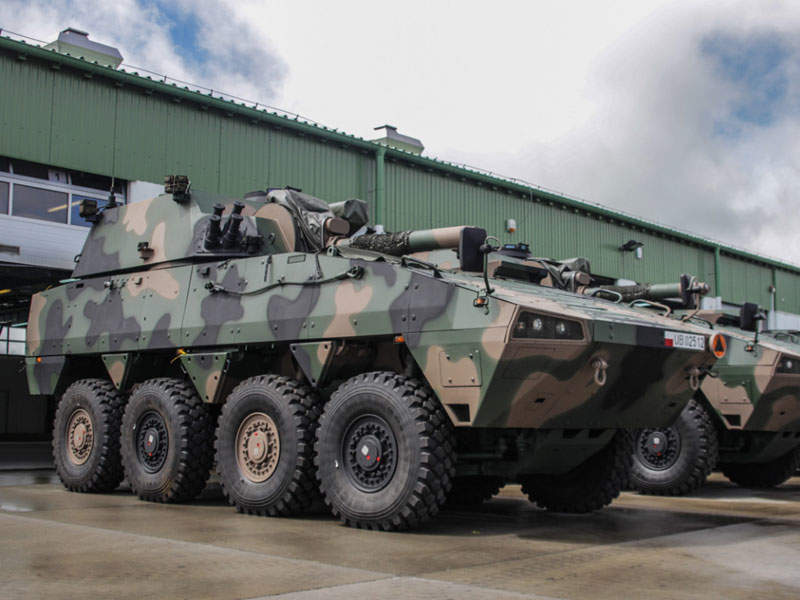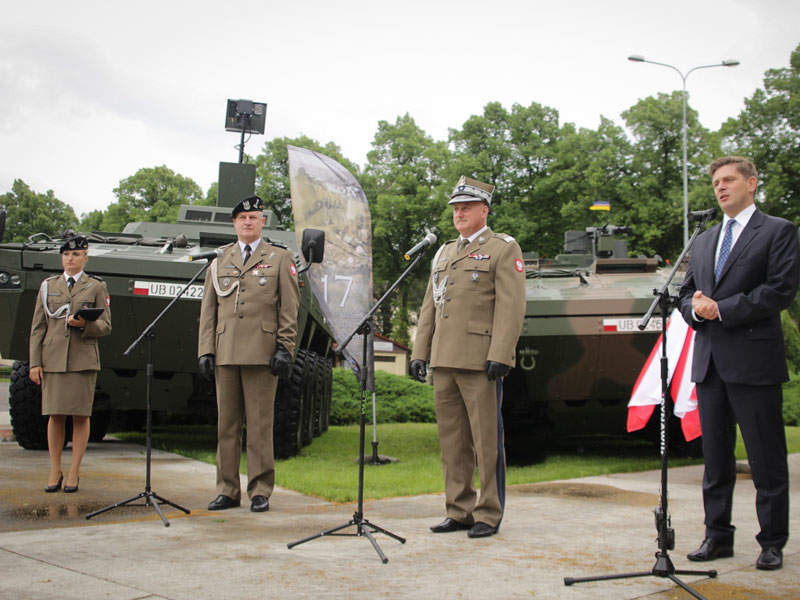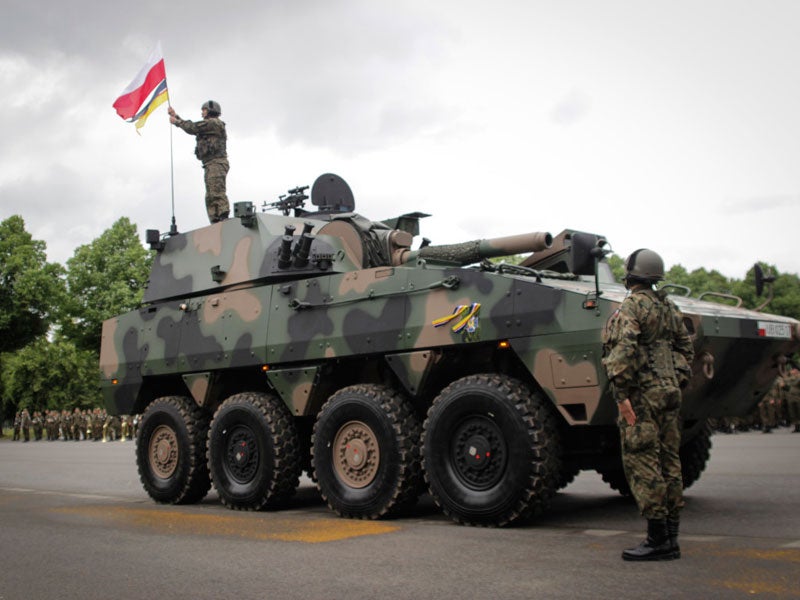
The Rak 120mm self-propelled mortar system is currently being produced by Huta Stalowa Wola (HSW) to meet the requirements of the Polish Land Forces. The mortar can conduct indirect, semi-direct and direct fire against mechanised units, command posts, command-observation points and fortifications.
The contract for the production of 64 Rak mortar systems and 32 command post vehicles was signed between the MoND Armament Inspectorate and the consortium of HSW and Rosomak in April 2016.
The first batch of eight Rak self-propelled mortar vehicles was delivered to the Polish Armed Forces in June. Each Polish artillery company comprises eight Rak 120mm mortar vehicles, four command-post vehicles for company and platoon commanders, two artillery reconnaissance vehicles, and three artillery ammunition supply vehicles.
The Polish Land Forces are anticipated to take delivery of two artillery company modules a year until 2020.
Design and features of Rak mortar system
The Rak self-propelled mortar system is based on the on the chassis of Rosomak 8×8 armoured vehicle. The rear section of its all-welded steel hull houses a large turret. The system is manned by a crew of three including a driver, a commander and a gunner.
The mortar vehicle measures 7.7m-long and 2.8m-wide. The driver is seated in the forward hull, while commander and gunner are accommodated in the turret. The vehicle can be accessed through a roof hatch, and a door at the rear hull.
The vehicle is fitted with standard equipment and systems such as day and night observation instruments for commander, an omni-directional reconnaissance system, a ballistic computer, a TALIN inertial navigation system, a global positioning system (GPS), an integrated communication digital radio station, laser warning system, a hunter-killer system, and a battlefield management system.
Armament and self-protection
The turret is armed with a 120mm breech-loaded mortar system with a barrel length of 3,000mm. The secondary armament includes a 7.62mm UKM 2000 D machine gun equipped with BAZALT day-night gun sight. The 120mm mortar has a rate-of-fire of six to eight rounds a minute and a maximum firing range of 10km. The system can fire at an angle of elevation between -3° and 80° and can traverse 360°.
The mortar is fed by an automatic loading system, which holds 20 projectiles for immediate use, while 26 additional projectiles are stored in the crew compartment. The opto-electronic direct fire sight with thermal imaging camera and laser range finder as well as an automatic aiming system and WB Electronics computerised fire-control system enable accurate engagement of targets.
The vehicle offers STANAG 4569 Level 1 protection. The armoured hull and turret protect the crew from small arms fire, 7.62mm rounds, artillery shell splinters and hand grenades, unexploded artillery fragmenting sub-munitions, and small anti-personnel explosive devices. Four 81mm smoke grenade launchers mounted on either side of the turret further increase the survivability of the vehicle.
Engine and mobility of Rak mortar
The Rak mortar carrier is powered by a Scania DI1249A03P turbocharged diesel engine mated to a ZF Ecomat 7HP 902S automatic gearbox with seven forward plus one reverse gear. The power-plant enables the vehicle to run at a maximum speed of 80km/h on road.
The vehicle is equipped with hydro pneumatic suspension system and can negotiate gradients up to 60% and a side slope of 35%.
It is capable of crossing a trench of 2.1m width and a vertical obstacle of 0.5m height, and can ford a depth of 1.5m without preparation. The maximum cruising range of the mortar carrier is 500km.
The Global Armoured Vehicles and Counter-IED Vehicles Market 2011-2021
This project forms part of our recent analysis and forecasts of the global armoured vehicles and counter-IED vehicles market available from our business information platform Strategic Defence Intelligence. For more information click here or contact us: EMEA: +44 20 7936 6783; Americas: +1 415 439 4914; Asia Pacific: +61 2 9947 9709 or via email.

